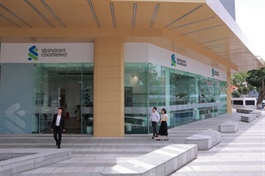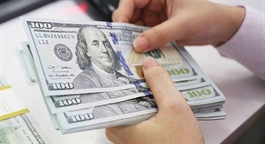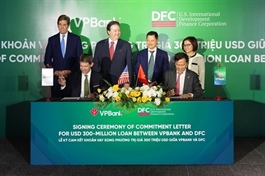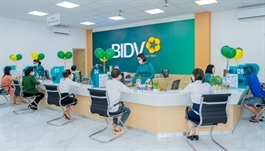Foreign lenders dominate financials
Foreign lenders dominate financials
While local banks grapple with challenges and declining profits, their foreign-invested counterparts are registering stellar performances in Vietnam.
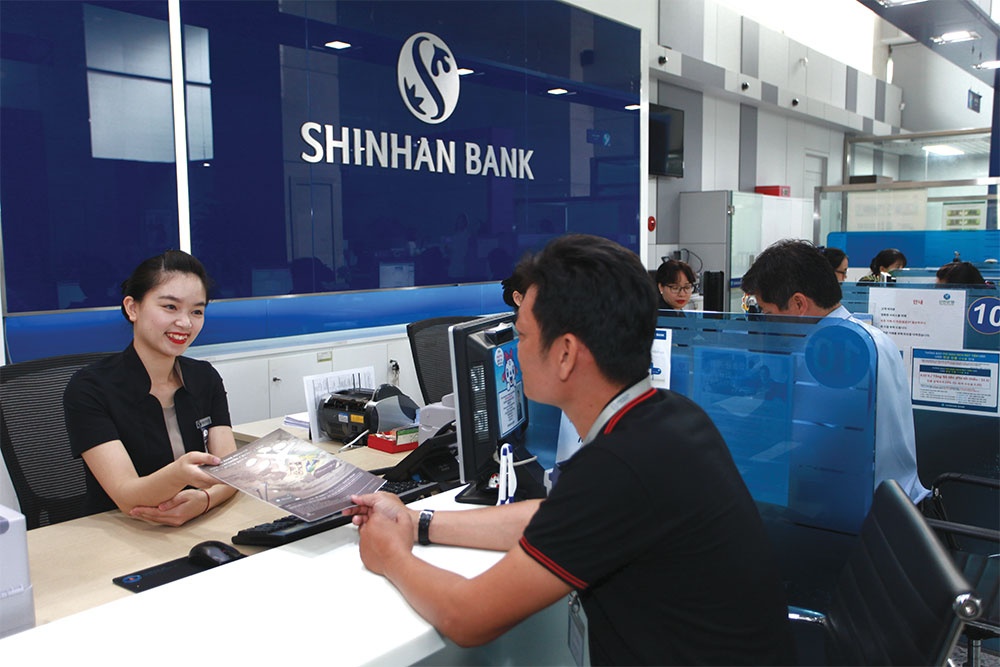
Shinhan Bank Vietnam last week unveiled its financial report for H1, revealing a post-tax profit of about $100.9 million, or 65 per cent of the total profit of the bank in the previous year.
Contributing to this substantial profit, the bank’s return on equity has seen a noteworthy ascent, moving from 14.07 per cent at the start of the year to 17.47 per cent by June 30.
Shinhan’s total equity also stood at roughly $1.165 billion, marking an increase of nearly $101.27 million since the year began.
The bank’s capital adequacy ratio has also experienced a rise, ascending from 17.84 per cent at the start of the year to 20.43 per cent by mid-year.
A slew of other prominent South Korean financial institutions are setting their sights on the burgeoning Vietnamese banking landscape.
In a June visit to Vietnam, Kang Seoghoon, chairman of state-owned Korean Development Bank, underscored the bank’s keen interest in forging partnerships with Vietnamese counterparts, particularly in sectors like high-tech innovation, digital transformation, and green energy.
“Our aim is to set up a KDB presence in Vietnam, facilitating local enterprises in their global ventures. This not only champions job creation but also catalyses economic progression,” he said.
In a parallel move, Industrial Bank of Korea (IBK) is charting its blueprint to establish a legal foothold in Vietnam, with a strategic focus on the small and medium enterprise sector. Chairman and CEO Kim Sung-tae said, “IBK is eager to establish a legal presence in Vietnam, not only to support South Korean enterprises but also to extend assistance to Vietnamese businesses, particularly small- and medium-sized enterprises, across various regions.”
Vietnam’s Deputy Prime Minister Le Minh Khai said, “The State Bank of Vietnam (SBV) is in the process of evaluating licence submissions from potential entrants, a list that includes half a dozen South Korean financial institutions, notably IBK and KDB.”
Meanwhile, foreign-invested bank HSBC Vietnam also painted a rosy picture of its business landscape in the first half of 2023.
The bank reported a post-tax profit of $111.73 million for the initial six months of this year. This figure marks a staggering increase, 2.4 times higher than that of the corresponding period last year. HSBC Vietnam’s net interest income stood out, reaching $168.9 million, a sum that’s 2.6 times its value from the same time frame a year ago.
By the end of June, HSBC Vietnam’s total assets were valued at $8.03 billion, a slight dip from the end of 2022. Simultaneously, the bank’s equity touched $788.7 million, an increase of 17 per cent.
Reflecting this resurgence, HSBC Vietnam’s financial health seems to have rejuvenated after the slump observed between 2020 and 2021. During 2018-2019, profits ranged between $97.05 million and $101.27 million. However, 2020-2021 saw a decrease, with figures hovering between $54.85 million and $63.29 million.
This positive financial trajectory exhibited by Shinhan Vietnam and HSBC Vietnam runs counter to the prevailing gloomy scenario encountered by numerous Vietnamese banks.
“Foreign banks operating in Vietnam are showcasing robust financial health, a reflection of their strategic client selection and rigorous risk management strategies,” an industry insider told VIR. “While many local banks are intertwined with potentially volatile real estate loans, these international entities often adopt a more cautious approach.”
“In addition, their client portfolios predominantly comprise foreign-invested firms known for their strong financial standing and stable operations, thereby steering clear of the pitfalls of riskier loan segments prevalent in the domestic market.”
Cumulatively, in H1 2023, post-tax profits of 27 listed banks receded by 2.9 per cent amid sluggish credit growth environment and rising provisioning costs.
According to MB Securities, the net interest margin of listed commercial banks in Vietnam continued its diminishing trend in Q2 this year.
“This was somewhat anticipated, given that deposit rates, despite decreasing, are still relatively high compared to the pre-pandemic era. Concurrently, lending rates have been continually dropping, reflecting both the low credit demand and the SBV’s directives to support businesses during these challenging times,” MB Securities said.
Meanwhile, Vietcombank Securities also stated that a significant hurdle local banks face is real estate stagnation, leading to shrinking profits. “Real estate has long been the cornerstone of most loan collateral. The current freeze presents unprecedented challenges in bad debt resolution,” the brokerage said.





